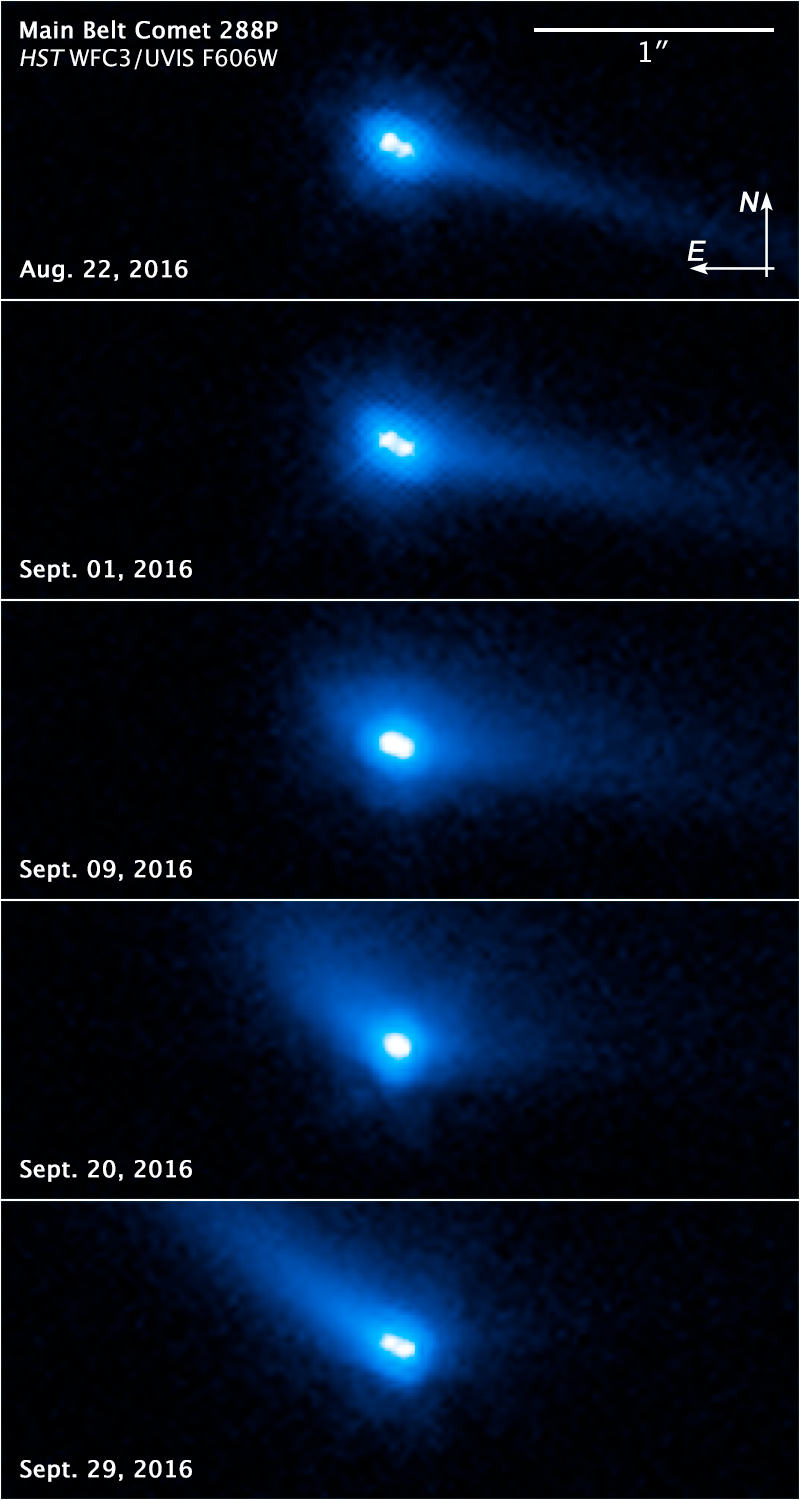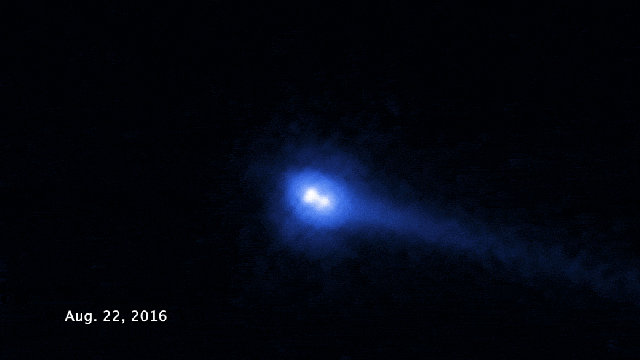Is it an asteroid? A comet? Both? Observations by the Hubble Space Telescope are revealing new details about a strange binary asteroid that’s performing double-duty as a comet. It’s the first time scientists have ever seen such a thing.
Image: NASA, ESA and J. Agarwal (Max Planck Institute for Solar System Research)
Back in 2006, Spacewatch discovered an asteroid named 300163 (2006 VW139). Astronomers using the Pan-STARRS telescope detected some comet-like activity coming from the object in 2011, so it was also given a comet designation of 288P. Now, things have changed yet again. When the object made its closest approach to the Sun last year, a German-led team of scientists used the NASA/ESA Hubble Space Telescope to make observations, revealing not one but two asteroids. Which means it’s a binary system.
The objects are almost the same size and mass, and they’re orbiting each other at a distance of 100km. But here’s the thing — the asteroids each have a coma (a bright halo of ejected material) and are together producing a single long tail of dust — the quintessential characteristics of a comet. It’s now the first known binary asteroid that’s also considered a main asteroid belt comet. These findings now appear in the science journal Nature.

Image: NASA, ESA and J. Agarwal (Max Planck Institute for Solar System Research)
Hubble’s latest observations shows there’s a lot going on in this oddball binary.
“We detected strong indications for the sublimation [immediate conversion of a solid into a gas] of water ice due to the increased solar heating — similar to how the tail of a comet is created,” noted Jessica Agarwal, a scientist at the Max Planck Institute for Solar System Research who’s studying the object, in a statement.
2006 VW139/288P has other weird features as well, namely an unusually wide 100km separation, strikingly similar weights and sizes, and a highly eccentric orbit. Binary asteroids have been discovered before, but very few have this kind of wide separation.
Agarwal’s team hypothesises that 2006 VW139/288P emerged as a binary around 5000 years ago, which is a blink of an eye in cosmological terms. It was once a single object, but it started spinning so rapidly that it split apart into two pieces. After that, the remaining fragments moved away from each other owing to the effects of sublimation, where the spewing water molecules provided an outward force.
This is a strange object for sure, but its discovery will now challenge scientists to discover more like it. As the study of complex bodies such as Ceres has indicated, the distinction between asteroids and comets may be a lot fuzzier than previously thought. The study of main-belt comets is important because it’s these things that could have been responsible for delivering water to Earth billions of years ago.
[Nature]
